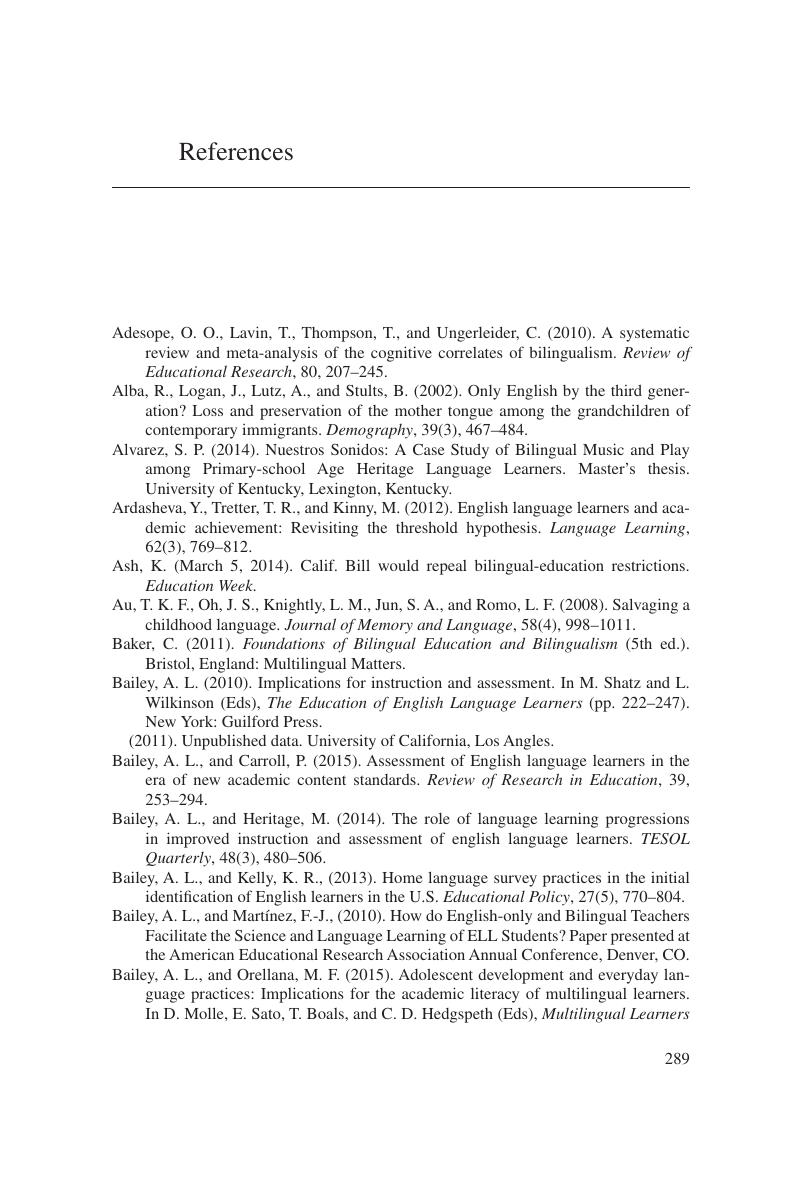 Children's Multilingual Development and Education
Children's Multilingual Development and Education Book contents
- Children’s Multilingual Development and Education
- Children’s Multilingual Development and Education
- Copyright page
- Dedication
- Contents
- Figures
- Tables
- Foreword
- Preface
- Acknowledgments
- Abbreviations
- 1 Multilingual Nations: Multilingualism in Context
- 2 The Importance and Impact of Multilingualism
- 3 Debunking Myths about Multilingualism
- 4 Introducing Families and Educators of Multilingual Children
- 5 Raising Multilingual Children: One Family at a Time
- 6 Fostering Multilingualism in Diverse Educational Contexts
- 7 How Families and Schools Can Develop Together
- Book part
- Glossary
- References
- Author Index
- Subject Index
- References
References
Published online by Cambridge University Press: 05 December 2015
- Children’s Multilingual Development and Education
- Children’s Multilingual Development and Education
- Copyright page
- Dedication
- Contents
- Figures
- Tables
- Foreword
- Preface
- Acknowledgments
- Abbreviations
- 1 Multilingual Nations: Multilingualism in Context
- 2 The Importance and Impact of Multilingualism
- 3 Debunking Myths about Multilingualism
- 4 Introducing Families and Educators of Multilingual Children
- 5 Raising Multilingual Children: One Family at a Time
- 6 Fostering Multilingualism in Diverse Educational Contexts
- 7 How Families and Schools Can Develop Together
- Book part
- Glossary
- References
- Author Index
- Subject Index
- References
Summary

- Type
- Chapter
- Information
- Children's Multilingual Development and EducationFostering Linguistic Resources in Home and School Contexts, pp. 289 - 306Publisher: Cambridge University PressPrint publication year: 2015
